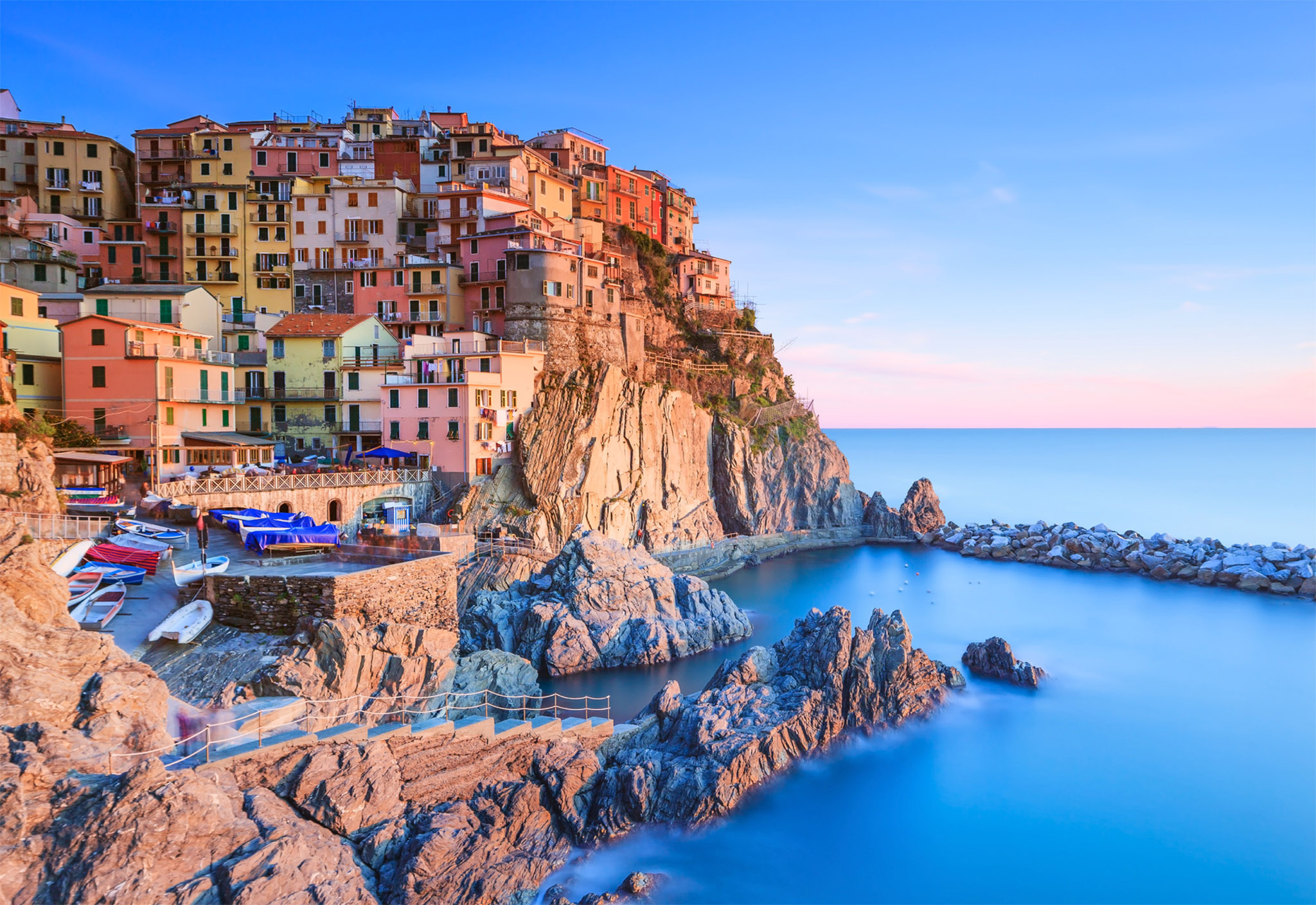
t Pastel-coloured houses perched on the cliffside at Monterosso al Mare

t Pastel-coloured houses perched on the cliffside at Monterosso al Mare
Experience Liguria
Backed by steep hillsides glittering with olive trees, Liguria looks out over the Tyrrhenian Sea. For centuries maritime trade was a mainstay, bringing sugar, salt and fish – the flavours of the region’s cuisine – to the coast, along with prosperity. West of the bustling city of Genoa are sandy beaches, while the southeast offers walks between picturesque Cinque Terre fishing villages.
Genoa has a long history as a seafaring power, achieving greatness first as a trading post with ancient Greece and Phoenicia and, later, as the capital of a small commercial empire that at one stage eclipsed even Venice. The great sea admiral Andrea Doria came from Genoa, as did the 15th-century explorer Christopher Columbus.
Genoa’s rise began in the 12th century, when it succeeded in beating the Saracen pirates that plagued the Ligurian coast. Thereafter, the maritime republic prospered, profiting from the Crusades to set up trading posts in the Middle East and marshalling its naval might to humble its rivals. The golden age lasted from the 16th to the mid-17th century. Factionalism among the ruling aristocracy and foreign conquest, by the French in 1668 and the Austrians in 1734, led to the region’s decline. It was only in the early 19th century, with unification fervour spreading thanks to native son Giuseppe Mazzini and the revolutionary Garibaldi, that Liguria recaptured a glimpse of its former prominence.
Today, sheltered by the steep slopes that rise from the sea, faded, elegant mansions lie along the coast, particularly in Sanremo, where aristocrats came to spend the winter at the end of the 19th century.